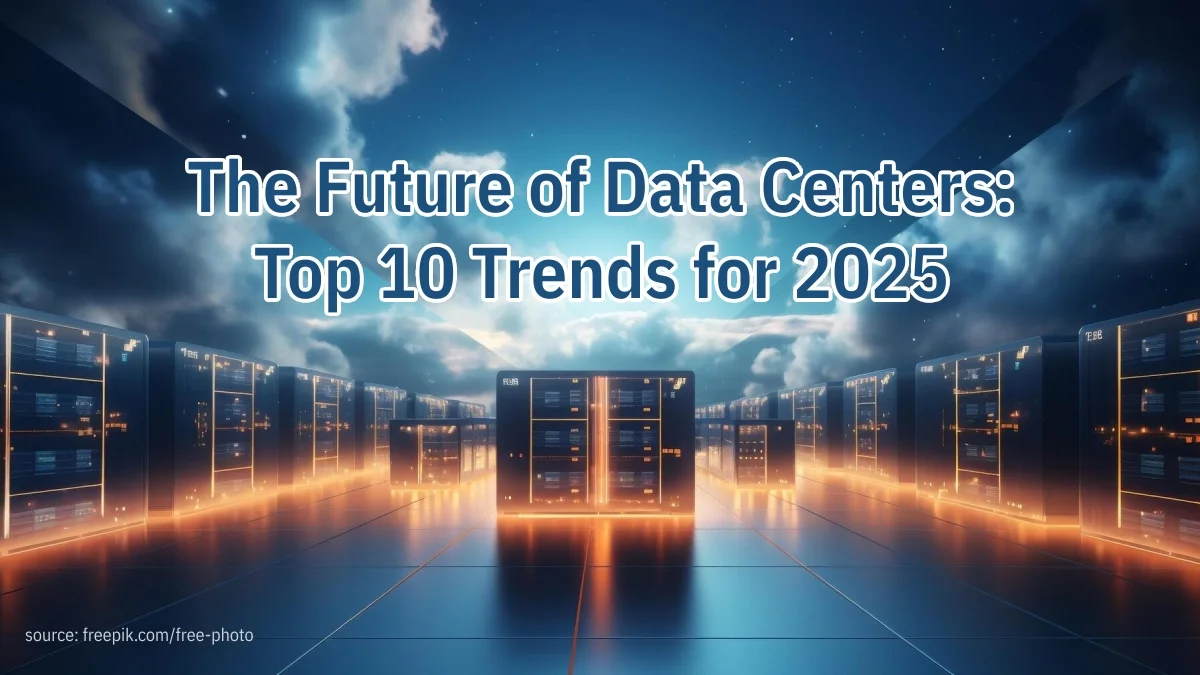The Future of Data Management: Database Development Trends for 2025

As we approach 2025, the landscape of database technology is evolving at an unprecedented pace. Aristek, a leader in innovative data solutions, recognizes the growing importance of data base consulting in navigating this rapidly changing terrain. With the increasing demand for bespoke database development, organizations are seeking tailored solutions to address their unique challenges and capitalize on emerging opportunities. Aristek’s expertise in data base consulting and bespoke database development positions them at the forefront of this dynamic field, ready to guide businesses through the complexities of modern data management.
- 1.Quantum-Inspired Database Algorithms
- Edge Computing and Distributed Databases
- Multi-Model and Polyglot Persistence
- Serverless and Cloud-Native Databases
- Blockchain Integration for Enhanced Data Integrity
- Advanced Data Privacy and Security Measures
- Time-Series and Stream Processing Integration
- Graph Databases for Complex Relationship Analysis
- In-Memory Computing at Scale
- Self-Healing and Autonomous Databases
- Data Fabric and Data Mesh Architectures
- Conclusion
The coming year promises to bring significant advancements in how we design, implement, and utilize database systems. From the integration of cutting-edge technologies to the adoption of new paradigms in data storage and processing, 2025 is set to be a transformative year for database development. As organizations grapple with ever-increasing data volumes and the need for real-time insights, the role of innovative database solutions in driving business success has never been more critical.
- Artificial Intelligence-Driven Database Management
Artificial Intelligence (AI) is set to revolutionize database management systems in 2025. AI-powered databases will become more intelligent, self-optimizing, and adaptive to changing workloads. These systems will leverage machine learning algorithms to predict and prevent performance issues, automatically tune database parameters, and optimize query execution plans in real-time.
AI-driven data governance tools will help organizations maintain data quality, enforce compliance, and streamline data management processes. Natural Language Processing (NLP) capabilities will enable users to interact with databases using conversational interfaces, making data access more intuitive and accessible to non-technical users.
1.Quantum-Inspired Database Algorithms
While fully functional quantum computers may still be years away, quantum-inspired algorithms are poised to make significant impacts on database development in 2025. These algorithms, which run on classical computers but borrow concepts from quantum computing, will offer substantial performance improvements for certain types of database operations.
Quantum-inspired optimization techniques will be particularly useful for complex query planning, large-scale data analytics, and solving combinatorial problems. This approach will enable databases to handle exponentially more complex problems than traditional algorithms, opening up new possibilities for data analysis and decision-making.
Edge Computing and Distributed Databases
The proliferation of Internet of Things (IoT) devices and the need for real-time data processing are driving the adoption of edge computing in database architectures. In 2025, we can expect to see a surge in distributed database systems that can process and store data closer to the source, reducing latency and bandwidth requirements.
Edge databases will enable organizations to analyze and act on data in real-time, even in environments with limited connectivity. This trend will be particularly impactful in industries such as manufacturing, healthcare, and smart cities, where immediate data processing and decision-making are crucial.
Multi-Model and Polyglot Persistence
As data complexity grows, the limitations of traditional, single-model databases are becoming more apparent. In 2025, we’ll see increased adoption of multi-model databases that can handle diverse data types and structures within a single system. These databases will support multiple data models such as relational, document, graph, and key-value, providing developers with greater flexibility and reducing the need for data integration across disparate systems.
Polyglot persistence, which involves using multiple database technologies to handle different data storage needs within a single application, will become more prevalent. This approach allows organizations to leverage the strengths of various database types to build more comprehensive and efficient data ecosystems.
Serverless and Cloud-Native Databases
The shift towards serverless and cloud-native architectures will continue to gain momentum in 2025. Database developers will increasingly design systems that are built specifically for cloud environments, taking full advantage of the scalability, flexibility, and resilience offered by cloud platforms.
Serverless databases will abstract away infrastructure management, allowing developers to focus solely on data models and application logic. These systems will automatically scale resources based on demand, optimizing costs and performance. Cloud-native databases will feature improved containerization support, enabling easier deployment and management across multi-cloud and hybrid environments.
Blockchain Integration for Enhanced Data Integrity
While blockchain technology has been around for several years, its integration with traditional database systems will gain significant traction in 2025. Blockchain can provide an immutable audit trail for sensitive data changes, enhancing transparency and compliance in regulated industries.
Database developers will explore hybrid models that combine the strengths of traditional databases with the security and traceability features of blockchain. This integration will be particularly valuable in supply chain management, healthcare record-keeping, and financial transactions, where data integrity and auditability are paramount.
Advanced Data Privacy and Security Measures
With data breaches and privacy concerns continuing to make headlines, database security will be a top priority in 2025. Database developers will focus on implementing advanced encryption techniques, such as homomorphic encryption, which allows computations to be performed on encrypted data without decrypting it.
Zero-trust architectures will be integrated into database systems, ensuring that every access request is authenticated and authorized, regardless of its origin. Additionally, privacy-preserving technologies like differential privacy will be more widely adopted to protect individual data while still allowing for meaningful analytics.
Time-Series and Stream Processing Integration
The explosive growth of IoT devices and the need for real-time monitoring will drive increased adoption of time-series databases in 2025. These specialized databases are optimized for handling time-stamped data and are crucial for applications such as industrial sensor monitoring, financial trading systems, and performance analytics.
Integration with stream processing technologies will enable real-time analytics on continuously generated time-series data. This convergence will support more sophisticated event-driven architectures and enable organizations to derive immediate insights from their data streams.
Graph Databases for Complex Relationship Analysis
Graph databases will gain significant traction in 2025 as organizations seek to leverage complex relationships within their data. These databases excel at managing highly connected data and are particularly useful for applications such as fraud detection, recommendation engines, and social network analysis.
As businesses increasingly recognize the value of relationship-based insights, graph databases will become an essential component of many data architectures. Developers will leverage graph algorithms and query languages to uncover hidden patterns and derive valuable insights from interconnected data.
In-Memory Computing at Scale
As hardware costs continue to decrease and memory capacities increase, in-memory database technologies will become more prevalent in 2025. These systems, which store and process data entirely in RAM, offer unparalleled performance for read-intensive workloads and real-time analytics.
Advancements in persistent memory technologies will blur the line between memory and storage, enabling large-scale in-memory databases that can provide both high performance and data durability. This trend will be particularly impactful for applications requiring ultra-low latency, such as financial trading systems and real-time recommendation engines.
Self-Healing and Autonomous Databases
Leveraging advanced AI and machine learning algorithms, self-healing and autonomous database systems will become more sophisticated in 2025. These systems will be capable of detecting and correcting a wide range of issues automatically, from data corruption and hardware failures to performance bottlenecks and security vulnerabilities.
Autonomous databases will go beyond self-healing to encompass self-tuning, self-scaling, and self-optimizing capabilities. They will continuously monitor workloads, adjust resources, and optimize performance without human intervention, significantly reducing administrative overhead and improving overall system reliability.
Data Fabric and Data Mesh Architectures
The concepts of data fabric and data mesh will gain prominence in database development in 2025. Data fabric provides a unified architecture for data management across diverse sources and platforms, enabling seamless data integration and access. Data mesh, on the other hand, promotes a decentralized approach to data ownership and governance, treating data as a product managed by domain-specific teams.
These architectures will help organizations better manage complex, distributed data environments and promote data democratization. They will enable more agile and scalable data strategies, supporting faster innovation and more effective use of data assets across the enterprise.
Conclusion
As we look ahead to 2025, the field of database development is poised for significant advancements that will reshape how organizations store, manage, and leverage their data assets. From AI-driven optimizations and quantum-inspired algorithms to edge computing, advanced security measures, and new architectural paradigms, database technologies will continue to evolve to meet the growing demands of our data-centric world.
Organizations that stay ahead of these trends and invest in modern database solutions will be better positioned to derive value from their data, make informed decisions, and drive innovation. As the complexity of data ecosystems grows, the role of skilled database developers, architects, and consultants will become increasingly crucial in designing and implementing these advanced systems.
The future of database development is bright, promising new capabilities that will empower businesses to tackle complex challenges and unlock new opportunities. By embracing these emerging trends, organizations can build robust, scalable, and intelligent data infrastructures that will serve as the foundation for their digital transformation journeys in 2025 and beyond.
As we navigate this exciting future, it’s clear that database development will play a pivotal role in shaping the technological landscape. The convergence of AI, edge computing, advanced analytics, and innovative data management paradigms will create unprecedented opportunities for businesses to harness the full potential of their data. Those who adapt and leverage these emerging database technologies will be well-positioned to thrive in an increasingly data-driven world, gaining competitive advantages and driving forward the next wave of digital innovation.




